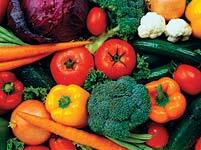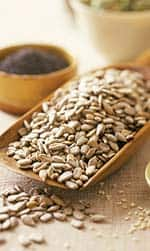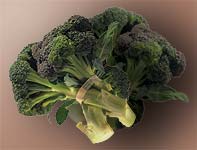Life Extension Magazine®
Promoting a long, healthy life requires preventing diseases associated with poor lifestyle choices and normal aging. Collectively, cardiovascular disease, cancer, and diabetes account for approximately two thirds of all deaths in the US and about $700 billion in direct and indirect economic costs.1 Scientists are discovering that vitamins, minerals, amino acids, and plant phytochemicals have powerful impacts on many of the biochemical pathways that go awry in disease processes such as diabetes, cancer, and heart disease. Nutrients and phytochemicals work by many mechanisms to reduce inflammation, inhibit free radicals, prevent glycation reactions, help remove toxins from the body, increase natural antioxidant status, interfere with the proliferation of undesirable cell lines, optimize glucose metabolism, support healthy methylation reactions, and boost the circulatory system. By arresting disease processes at the molecular and cellular levels, these therapeutic nutrients help arm us against the scourges of disease and aging, and thus build the foundation for a future of optimal health. In this article, we discuss some of the agents that have been identified by leading researchers as among the most promising in fighting illness and promoting health.
Scientists at Harvard Medical School have advised all adults to take a multi-vitamin supplement to help prevent suboptimal levels of nutrients that may contribute to the onset of diseases such as cancer, heart disease, and osteoporosis.2 For example, suboptimal levels of folic acid and vitamins B6 and B12 are a risk factor for cardiovascular disease and cancer of the colon and breast.2 Deficient levels of calcium and vitamin D can contribute to osteoporosis and the loss of bone mass.3 While multi-vitamins can help to prevent certain illnesses, research indicates that abundant intake of fruits and vegetables can prevent some of the major diseases of aging.4 Studies at the UCLA Center for Human Nutrition in Los Angeles, CA, have reported that higher intake of fruits and vegetables is associated with a reduced incidence of many common forms of cancer.4 The World Cancer Research Fund published an extensive review of the effects of vegetable and fruit consumption on cancer risk.5 After reviewing hundreds of studies, this not-for-profit group determined conclusively that vegetables and fruits protect against cancer. The panel noted that consumption of at least five servings a day of vegetables and fruits was associated with an approximately 50% reduced risk for cancer compared to the risk associated with consuming only one or two servings.5 The panel also noted that the cancer-preventive effects of fruits and vegetables were dose dependent, with increased intake conferring greater protection.5 Compelling evidence likewise suggests that a diet rich in fruits and vegetables can lower the risk of heart disease, the leading cause of mortality and morbidity in the US and worldwide. People who consume more fruits and vegetables often have a lower prevalence of important risk factors for cardiovascular disease, including hypertension, obesity, and type II diabetes.6 Regular and frequent consumption of fruits and vegetables has also been shown to lower the risk of coronary heart disease, stroke, atherosclerosis, and hypertension.5,7 A large study conducted in Finland examined the effects of dietary fruit, berry, and vegetable intake on cardiovascular mortality and all-cause mortality in men.8 More than 2,000 Finnish men participated in the study, with a mean follow-up time of 12.8 years. Men with the highest consumption of fruits, berries, and vegetables had a 41% lower risk of death from cardiovascular disease and a 44% lower risk of all-cause death than men who consumed the least amount of fruits, berries, and vegetables.8 The study authors concluded, “…diets that are rich in plant-derived foods can promote longevity.”8
Fruits and vegetables not only contain beneficial vitamins, minerals, and enzymes, but also provide a wealth of phytonutrients. These plant-based compounds likely are responsible for some of the protective effects of fruits and vegetables. Phytonutrients are versatile and powerful agents that help to modulate disease risk through a variety of mechanisms. For example, the glucosinolates in broccoli have been associated with a reduced risk of cancer, particularly of the lung and gastrointestinal tract.9 These compounds appear to offer protection by stimulating the liver’s Phase II enzymes, which are powerful detoxifiers of chemical carcinogens.10 By contrast, the polyphenols present in olive extract promote health through a different mechanism. In humans, olive polyphenols have been shown to increase the resistance of low-density lipoprotein (LDL) to oxidation.11 Oxidized LDL is a significant risk factor for the development of heart disease and atherosclerosis. Pomegranate Promotes Heart HealthThe pomegranate is a widely cultivated tropical fruit that is native to Asia. Valued throughout history as a symbol of health and fertility, pomegranates contain many seeds enclosed in juicy red pulp and covered in a tough red rind. Pomegranate appears to be one of the most powerful sources of antioxidants among dietary plants, demonstrating a number of actions that can help prevent disease and aging.12 Ellagic acid, a polyphenol compound found in pomegranate, has been associated with antioxidant, anti-cancer, and anti-atherogenic biological properties.13 Pomegranate polyphenols have been found to protect LDL against cell-mediated oxidation.14 In mice, polyphenol-rich pomegranate juice significantly inhibited the development of atherosclerotic lesions.14
In a study of pomegranate juice supplementation, atherosclerotic patients with carotid artery stenosis who consumed pomegranate juice for one year saw a significant reduction in their carotid intima-media thickness, a marker for coronary artery disease.15 They also experienced a significant reduction in their serum LDL basal oxidative state, an increase in their serum total antioxidant status, and a reduction in their systolic blood pressure.15 The study investigators suggested that pomegranate polyphenols may have been responsible for these effects. Diabetics often experience elevated lipid levels and a correspondingly higher risk of heart disease. Pomegranate juice supplementation has been reported to improve lipid profiles in diabetics.16 Diabetic men and women with hyperlipidemia consumed 40 grams of concentrated pomegranate juice daily for eight weeks. At the study’s end, the participants demonstrated significant reductions in total cholesterol and LDL.16 This important finding suggests that pomegranate juice may help to lessen the increased risk of heart disease associated with diabetes.
| ||||||||
Sesame Reduces Inflammation, Boosts AntioxidantsSesamin, one of the lignans found in sesame seeds, has been reported to possess antioxidant effects and to scavenge reactive oxygen species.17 It apparently acts as an anti-inflammatory as well, reducing inflammation by increasing levels of dihomo-gamma linolenic acid, a precursor of anti-inflammatory prostaglandin E1. Sesame also decreases production of pro-inflammatory prostaglandin E2 and leukotriene B4 by inhibiting delta-5 desaturase enzyme activity.18 Studies in rats demonstrate that sesamin can lower serum lipids,19 while other animal studies suggest that sesamin may prevent hypertension.20
The tocopherols, the family of nutrients that includes vitamin E, are believed to play an important role in preventing some major diseases associated with aging, including heart disease and cancer. In humans, consumption of a moderate amount of sesame seeds has been found to significantly increase blood levels of gamma tocopherol,21 which appears to be an especially beneficial member of the vitamin E family. Animal studies likewise have demonstrated that intake of sesame seeds and sesame lignans, particularly sesamin, increases blood levels of gamma tocopherol.22 Sesame and its lignans appear to offer numerous benefits, including promoting healthy vitamin E levels, reducing inflammation, and promoting healthy blood lipids and blood pressure. Health Benefits of Olive ExtractHealth-conscious adults have long prized olive oil. As the principal source of fat in the Mediter-ranean diet, olive oil has been associated with a lower incidence of coronary heart disease and certain cancers. Extra-virgin olive oil contains abundant phenolic compounds such as hydroxytyrosol that are responsible for its strong flavor and high stability.23 Accu-mulating evidence indicates that the phenolic compounds in olives are powerful antioxidants (both in vitro and in vivo) and exert other potent biological actions that may be partly responsible for the health-promoting effects of the Mediterranean diet.23
One byproduct of the processing of olive oil is a water extract of olive that contains phenolic compounds that are strong scavengers of free radicals.24 The most potent of these appears to be hydroxytyrosol, which has also demonstrated antibacterial activity.24 In-vitro studies have demonstrated that olive polyphenols increase LDL’s resistance to oxidation.25 In a recent study examining whether this effect occurs in humans, subjects consumed virgin olive oil containing differing concentrations of phenolic compounds over the course of three weeks.10 Consumption of olive oil resulted in a decrease of in-vivo oxidized LDL, an increase in ex-vivo resistance of LDL to oxidation, and an increase in high-density lipoprotein (HDL).10 These effects were more pronounced in those who consumed olive oil with higher concentrations of polyphenols, suggesting that the polyphenols were responsible for the beneficial effects of preventing LDL oxidation and boosting HDL.10 A high intake of antioxidants is protective against the oxidative stress that is involved in the onset of several degenerative diseases. Animal studies suggest that olive polyphenols may protect against oxidative stress by sparing the consumption of vitamin E, a critical antioxidant, during normal physiological processes.26 Another study in animals found that hydroxytyrosol offered protection from the oxidative stress associated with inhaling sidestream smoke.27 Because dietary sources of olive oil may not provide enough of the potent polyphenols needed to obtain maximal antioxidant benefits,28 a potent supplemental dose rich in hydroxytyrosol is recommended. Green Tea: Cancer Preventive and CardioprotectiveTea consumption has been associated with reduced risk for numerous diseases, including cancer, coronary heart disease, stroke, and osteoporosis.29 Green tea is known for its antioxidant effects. Its main constituent is a polyphenol called epigallocatechin-3 gallate, or EGCG. Polyphenols may be responsible for green tea’s cancer-preventive effects. In-vitro studies show that green tea polyphenols potently induce apoptotic cell death and cell cycle arrest in tumor cells, but not in their normal cell counterparts.30 Various animal studies have shown that green tea inhibits tumor incidence and multiplicity in different organ sites such as the skin, lungs, liver, stomach, mammary glands, and colon.30 EGCG has been demonstrated to inhibit cyclooxy-genase-2 (COX-2) in human prostate carcinoma cells.31 Over-expression of COX-2 has been implicated in many pathological conditions, including cancer.31
Green tea extract helps protect the cardiovascular system. EGCG has been found to reduce LDL oxidation,32 which has been implicated in the formation of atherosclerotic plaques in the cardiovascular system. Green tea consumption has been associated with a lower incidence of coronary artery disease.33 A recent study demonstrated that regular consumption of green tea reduces the risk of developing hypertension,34 which accelerates atherogenesis and is associated with an increased risk of stroke. Epidemiological studies suggest that green tea may play a role in preventing type II diabetes, while human studies have shown that green tea promotes healthy glucose metabolism.35 In diabetic mice, green tea lowered blood glucose levels,35 suggesting its promise in promoting healthy blood sugar levels. Oxidative stress is known to play a pivotal role in the development of neurodegenerative diseases. Researchers are examining wheth-er green tea, with its potent poly-phenols, may protect the nervous system and alter brain aging. Ongoing epidemiological studies are investigating whether green tea may help to prevent progressive neurodegenerative disorders such as Parkinson’s disease and Alzheimer’s disease.36 Broccoli: Broad-Spectrum Cancer ProtectionBroccoli is a rich source of disease-preventive compounds. D-glucarate from broccoli has been shown to be an effective phytonutrient against cancer, offering cancer protection by supporting healthy mechanisms of detoxification. Specifically, D-glucarate inhibits beta-glucuronidase, an enzyme found in certain gut bacteria.
One important mechanism by which the body eliminates toxic chemicals and hormones is by attaching glucuronic acid to them in the liver. Through the process of glucuronidation, the body removes carcinogenic substances such as nitrosamines, polycylic aromatic hydrocarbons, sex steroid hormones, and heterocylic amines. Beta-glucuronidase breaks the bond between these harmful metabolites and glucuronic acid, allowing toxins to be reabsorbed by the body. Elevated beta-glucuronidase activity has been correlated with increased risk for cancers, particularly hormone-dependent cancers such as breast, prostate, and colon cancers.37 By inhibiting beta-glucuronidase, D-glucarate supports the body’s excretion of toxins and hormones.
High intake of cruciferous vegetables has been associated with a reduced risk of cancer, particularly of the lung and gastrointestinal tract.8 This protective effect has been linked to the presence of glucosinolates,8 which are metabolized to compounds that have been shown to be powerful inducers of the liver’s Phase II detoxification enzymes.9 These liver enzymes are known to protect against chemical carcinogenes.9 Induction of Phase II enzymes also promotes the scavenging of free radicals and may relieve oxidative stress, thereby ameliorating hypertension and atherosclerotic changes.38 Numerous studies show that broccoli may contain more cancer-preventive nutrients than any other plant. In addition to containing D-glucarate, broccoli is rich in sulforaphane, a compound that has been found to block the formation of tumors initiated by chemical carcinogens and to induce cancer cell death.39 Sulforaphane and other broccoli compounds have been shown to prevent cancer by supporting the liver’s Phase II detoxifying enzyme systems.40 Broccoli sprouts contain 30-50 times more of these protective chemicals than are found in mature broccoli plants.41
| ||||||||||
The Role of Flavonoids and CarotenoidsLuteolin, a flavonoid found in parsley, artichoke, basil, celery, and other foods, has been found to actively scavenge free radicals.42 Perilla leaf, one of the richest sources of luteolin, is known to inhibit inflammation, allergic response, and the production of tumor necrosis factor-alpha.43 In studies involving human cancer cell lines, luteolin greatly sensitized apoptotic cell death induced by tumor necrosis factor-alpha, suggesting a role for luteolin as an anti-cancer agent.44 Luteolin has also been demonstrated to be a potent inhibitor of thyroid cancer cell lines in vitro.45 Carotenoids are brightly colored pigments found in fruits and vegetables. Lutein, an antioxidant in the carotenoid family, is found in the macula, the central area of the eye’s retina. It may act as a filter to protect the macula from damaging forms of light. Lutein is associated with protection from age-related macular degeneration, the leading cause of blindness in older adults.46 Lycopene, another carotenoid, is a potent antioxidant found in its highest concentrations in tomato products. Lycopene has been found to offer protection from prostate cancer, the second leading cause of cancer death in men,47 as well as from other cancers such as breast cancer.48 High intake of lycopene has been associated with a reduced risk for heart disease,49 and also helps prevent LDL oxidation.50
Fruits Rich in AntioxidantsRich in vitamins, fiber, and phytochemicals, fruits are an excellent source of antioxidants12 and may provide protection from cancer by inhibiting angiogenesis.51 Current research suggests that some of the most beneficial health-promoting fruits are blueberries, bilberries, blackberries, cranberries, elderberries, cherries, plums, persimmons, and grapes.
Blueberries have been found to possess powerful antioxidant effects, as measured by their capacity to absorb oxygen radicals.51 In one animal study, supplementation with blueberry extract prevented memory loss associated with brain aging.52 Bilberry is a close relative of the American blueberry. Its ripe berries are a rich source of flavonoids that improve microcapillary circulation, decrease capillary permeability and fragility, and inhibit platelet aggregation.53 Bilberry consumption has been associated with a lower risk of cardiovascular disease and with improved visual function.54 Bilberry has also been reported to lower blood glucose levels and to prevent diabetic retinopathy.53 Blackberry extract has been used as a traditional herbal treatment for diabetes.55 In animal models, blackberry extract has demonstrated protective effects against inflammation56 and endotoxins.57 Cranberry has long been known for its efficacy in preventing urinary tract infections.58 Recent research indicates that cranberry may also inhibit the proliferation of certain human tumor cell lines.59 Elderberry extract has been used for centuries to treat colds, flu, sinusitis, and viral infections. Contemporary research confirms its efficacy in supporting a healthy immune system, and suggests possible applications for its use in supporting immune health in people who have cancer or the human immunodeficiency virus (HIV).60
Cherry fruit has been used as a folk remedy for gout for many years. Human research indicates that cherries lower plasma levels of urate, a metabolic marker that is elevated in gout.61 Cherry consumption has also been found to lower plasma levels of C-reactive protein, a marker of inflammation.61 Plums are a potent source of antioxidant activity, with one serving providing antioxidant protection equivalent to 144-889 mg of vitamin C.62 Persimmon fruit has demonstrated antioxidant and cholesterol-lowering effects in animal studies,63 and components of its extract have shown cytotoxic activity against human carcinoma cells.64 A rich source of dietary fiber, phenolic compounds, minerals, and trace elements, persimmon has been proposed as a valuable component of an anti-atherosclerotic diet.65 Grape seed extract possesses powerful antioxidant effects that protect the body from premature aging and disease.66 Grape seed contains proanthocyanidins, beneficial polyphenol substances whose effects include promoting youthful skin, supporting joint flexibility, and improving vision.66 The proanthocyanidins in grape seed extract may improve blood circulation by strengthening capillaries, arteries, and veins.66 Choosing a Multi-Nutrient FormulaWhile the market is flooded with multi-nutrient formulas, few stand up to a careful analysis of purity and potency. Many formulas contain only the US government’s recommended dietary allowance (RDA) of vitamins. While the RDA may be sufficient to prevent diseases such as scurvy, extensive studies have demonstrated that promoting optimal health requires nutrients in amounts that far exceed the RDA. Additionally, many of today’s multi-vitamin supplements use components that are inferior in quality compared to the pharmaceutical-grade nutrients used in premium products. Research also shows that the body more readily uses certain forms of vitamins and minerals than others. Many vitamin combinations on the market today use the cheapest available forms of vitamins and minerals. These are difficult for the body to absorb and use, and thus provide only marginal nutritional support. When choosing a multi-vitamin product, it is advisable to seek not only high potencies of nutrients, but also formulations designed for optimal absorption and use by the body. Vitamins and minerals play crucial roles in optimizing health and preventing disease, through mechanisms as diverse as maintaining normal homocysteine levels and reducing the occurrence of damaging glycation reactions.
| |||||||
| References | |||||||
|





